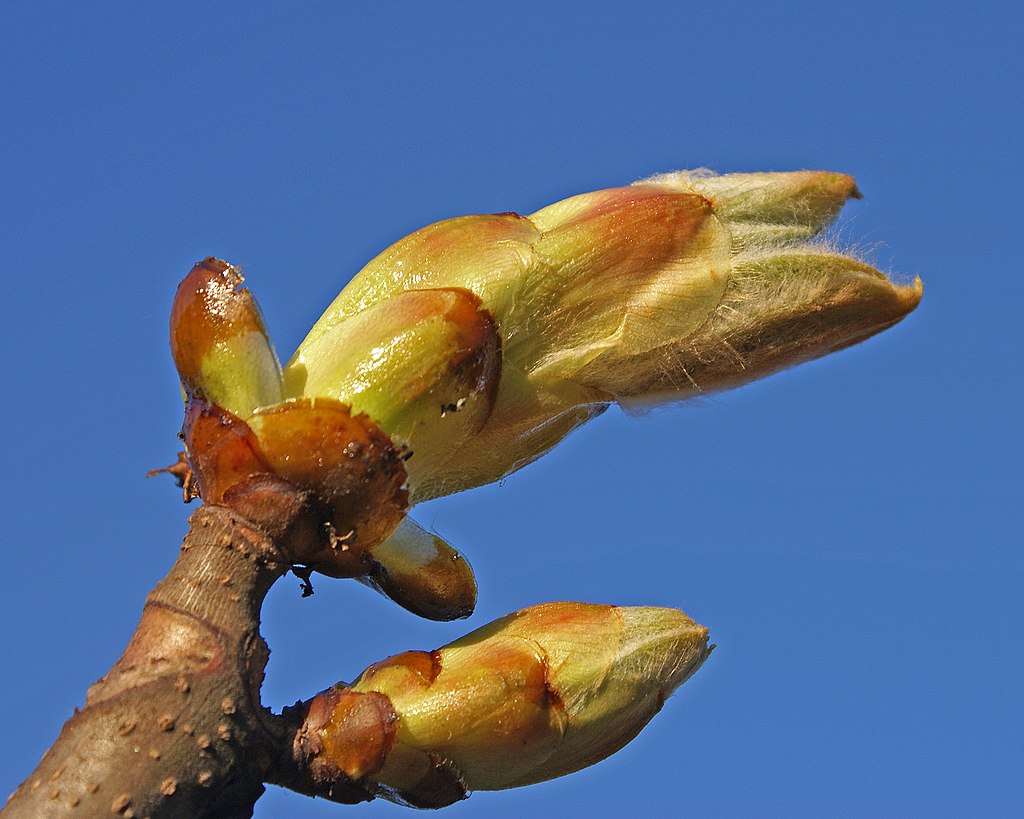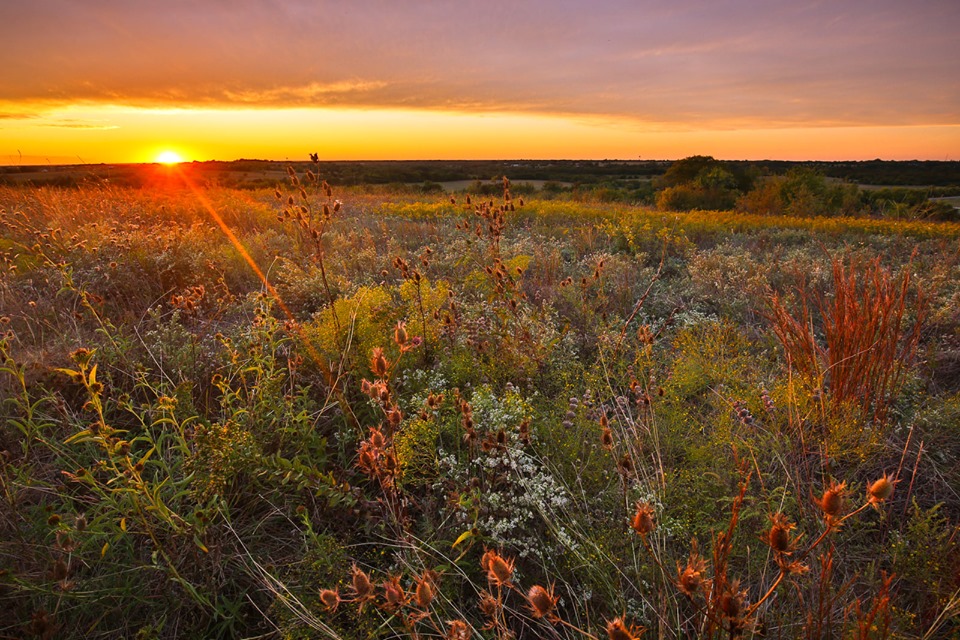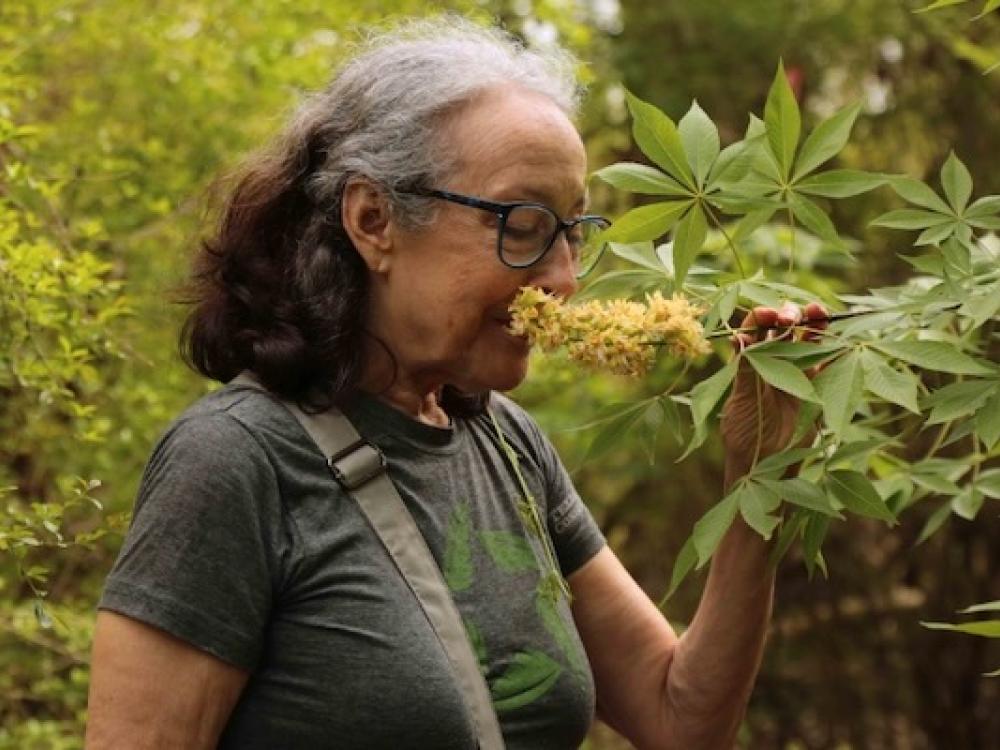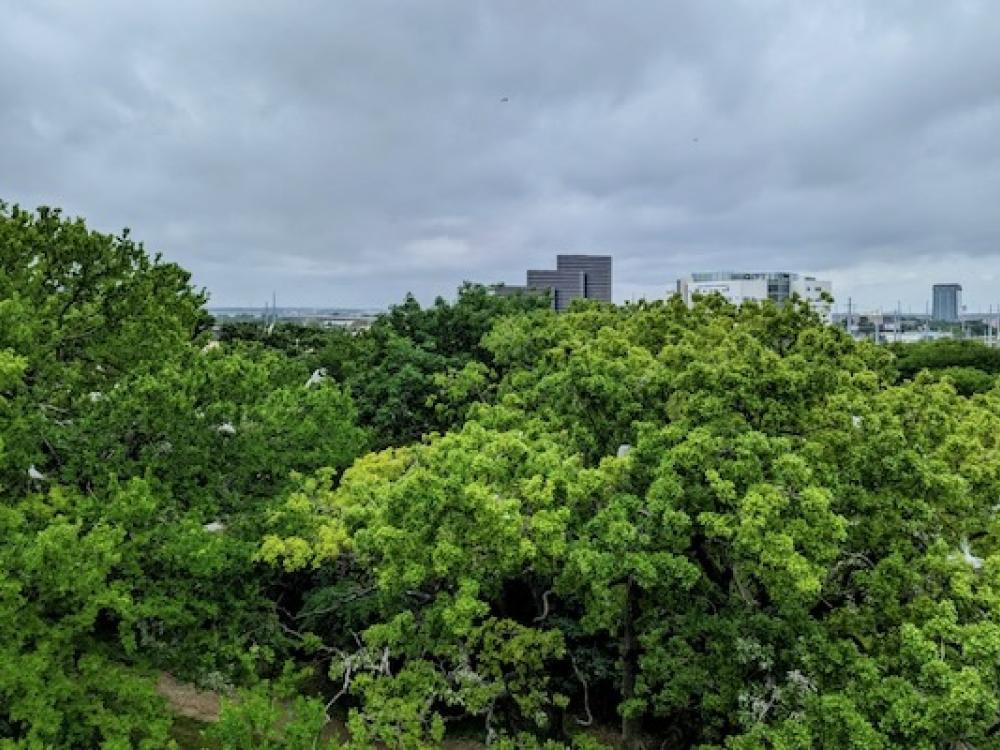We need more natural trails in Dallas
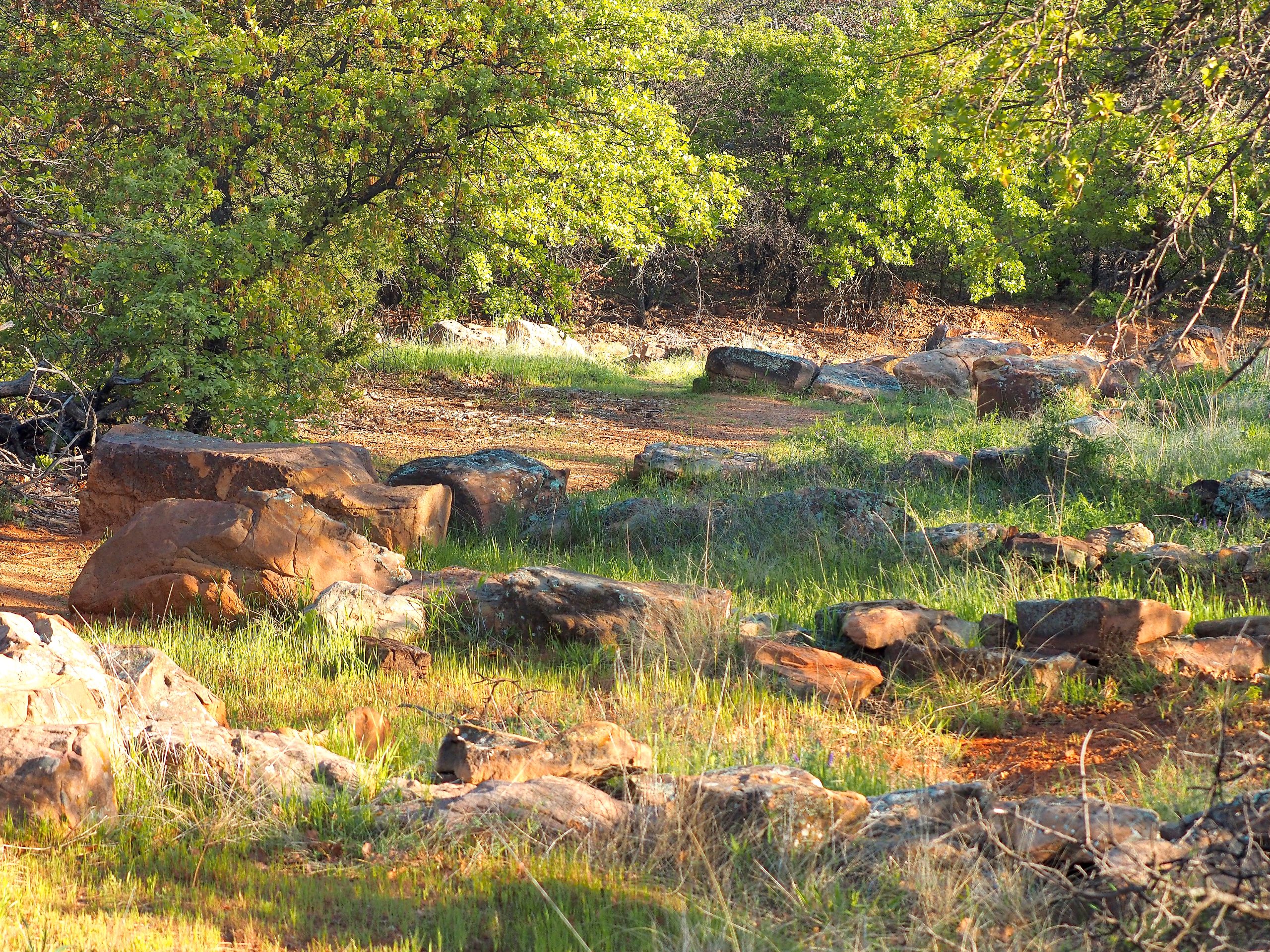
Rocky trails meander through the Iron Ore Knob at Sheri Capehart Nature Preserve in Arlington.(Bob Brennan / Wild DFW)
Dallas Morning News subscribers, please read here. Or become a digital or print subscriber.
Anyone, regardless of age can hike, from birdwatchers and naturalist to those seeking relief in the outdoors.
By Amy Martin – Jun 10, 2023
One foot in front of the other, the early humans moved — trampling the tall prairie grasses, compressing the forest ferns, wearing a furrow in the limestone. Making natural trails was our first human activity, with the earliest fossilized footprint 153,000 years ago.
“The world reveals itself to those who travel on foot,” states inveterate traveler and filmmaker Werner Herzog. There is a profound intimacy with the terrain in walking a nature trail, to sense the shape of the landscape — every dip and divot, every slight rise — through your feet.
When walking a dirt trail, you have to go slow, stay aware. It’s more challenging to walk, but that’s the point. The uneven ground tests your sense of balance. It works all your joints and muscles.
Within 30 yards down a natural trail, I instinctively let go. Clock time dissipates and I move at the speed of botany. Nature expects nothing and wants nothing from me. Disconnected on the trail from the throes of modern life, there is no need to do. I can simply be.
Ambling along, I pause and peer into the forest. A wash of leafy green reveals itself in layers. Individual plants assert themselves. I feel the barest wisp of a breeze that sneaks between the trees. A cascade of bird song and insect trills shimmers from the canopy.
“The body becomes steeped in the earth it treads. And thus, gradually, it stops being in the landscape: It becomes the landscape,” wrote Frédéric Gros in A Philosophy of Walking.
Where are Dallas’ natural trails?
The Texas Parks and Wildlife Department calls such a stress-relieving oneness with nature an “immersion experience.” That experience is impossible on a paved trail jostling with bicyclists, runners, and nature pushed off to the side. Or on a dirt-bike trail where fast-moving cyclists rip the reverie.
Walking and hiking nature trails is the most popular activity in Texas state parks. According to Statista, “Close to 59 million people in the United States participated in hiking activities at least once in 2021.” One-third of Americans trail hike at least once a year, and a quarter does so multiple times, states the Outdoor Fitness Society.
As I researched the 25 hiking adventures for Wild DFW: Explore the Amazing Nature Around Dallas-Fort Worth for Timber Press (July 11, 2023), the feedback I received from North Texans was unambiguous: We need more natural trails.
Core fans of natural trails are birdwatchers and naturalists who need close contact with nature’s denizens. But anyone, regardless of age or income, can hike. It appeals to all races. Almost half of all hikers are women. A growing contingent are trail runners who hew to dirt trails, and fitness hikers who prefer to get their steps outside.
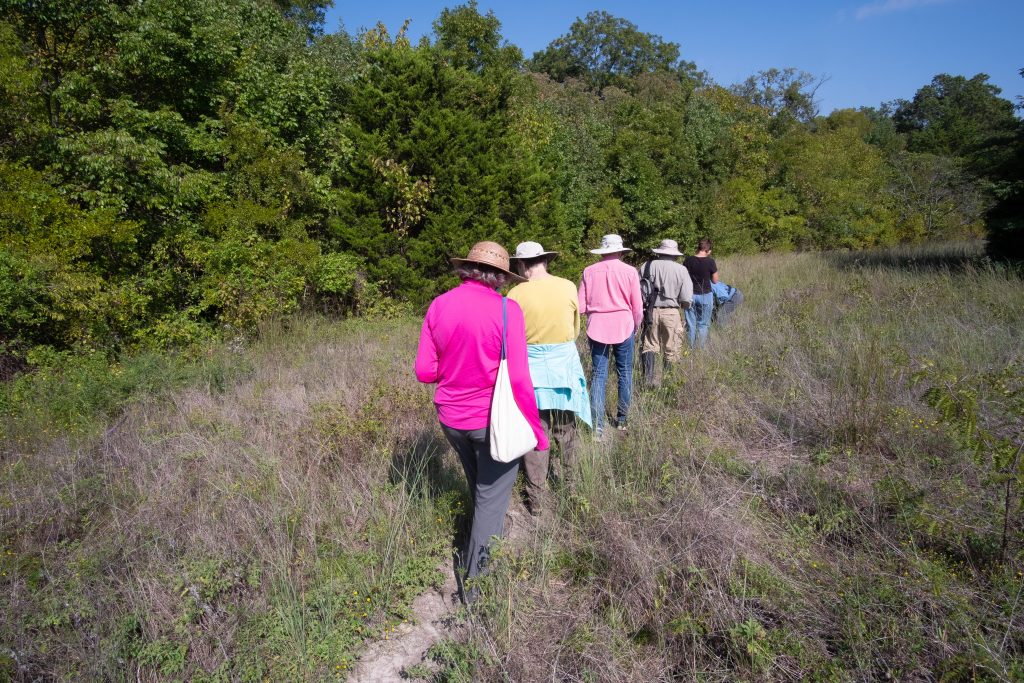
Not all hiking trail users are outdoors enthusiasts. The softer surface of non-paved trails causes less physical discomfort to those with arthritis and bone issues. The elderly and infirm with fall issues risk less with soft surfaces.
Once a mile or so down a natural trail, traffic noise and residential and industrial clamor typically dissipate. The air is fresh and free of exhaust and pollutants, a healing balm for respiratory illnesses, including asthma.
But with all these benefits and constituencies, I must ask: Why are there so few natural trails here? It’s been decades since Dallas municipal entities have made new hiking paths.
Funding is currently robust for off-road bike trails in Dallas, yet Statista shows there are seven times as many hikers. Millions go into paved trails dominated by runners and bicyclists. Natural trails cost a fraction.
Monthly workdays to maintain natural trails become community-building experiences, developing a sense of ownership of the trail. But unless open-space management receives consistent funds, natural trails are for naught. No hiker enjoys passing through a monoculture of privet, an invasive shrub from China, or battling giant ragweed or hedge parsley to find a trail.
“We live in a fast-paced society. Walking slows us down,” said Robert Sweetgall, walking enthusiast and author.
Nature trails and nature tourism
Off-road bicycle trails, designed with fast, sharp turns and slopes that facilitate speed, are not hiking trails. A good natural trail is unobtrusive to the terrain, integrates scenic views, interesting plants, and compelling geology, and offers places to pause and take in nature.
Professionals from Greenspace Dallas and S&S Trails have created North Texas’s best public hiking trails but need funding to do more. With few trails, people make their own, some badly eroded like at Scyene Overlook, or routed through ecologically sensitive areas.
Dallas County Parks and Open Space Program is the leader in Dallas-area natural trails. Their three preserves with more than four miles of natural trails — Cedar Ridge, Goat Island, and Spring Creek Forest — are sometimes overrun with users, especially Cedar Ridge, indicating there’s far more demand than current natural trails can handle.
The 6,000-acre Great Trinity Forest, the largest urban bottomland forest in the nation, could provide that hiking with sensitively sited and professionally made trails. So could the wild forested Elm Fork corridor from Frasier Dam Recreation Area north to State Highway 121.
Dallas County Open Space’s 21 preserves totaling 3,519 acres have nearly limitless potential for hiking. Especially if those south of Interstate 20 were connected with city and land-trust properties into contiguous riparian corridors.
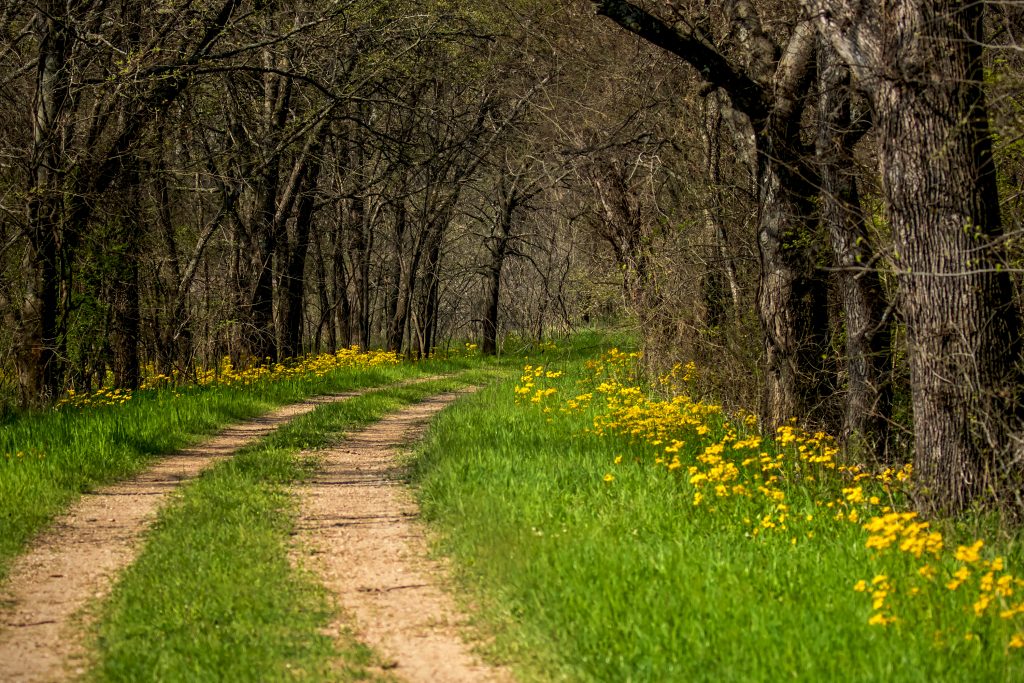
The need for natural trails goes beyond local users. Urban nature tourism infuses significant cash into cities like Houston and Seattle. The over-50 nature set, most no longer in camping mode, relishes staying in a comfortable abode, hiking all day on natural trails, and enjoying a good meal in the evening, maybe taking in a show.
After shattering my C2 vertebrae four years ago, an injury that only 2 percent walk away from, taking dirt paths brought me physical and psychological healing. Such trails are more than recreation; they are psychological and medical care.
“Of all the paths you take in life, make sure a few of them are dirt,” said naturalist John Muir.
Amy Martin is the author of “Wild DFW: Explore the Amazing Nature Around Dallas-Fort Worth” and sits on Dallas County Open Space’s Trails And Preserves Program board. She wrote this column for The Dallas Morning News.
“Of all the paths you take in life, make sure a few of them are dirt,” said naturalist John Muir.
Amy Martin is the author of “Wild DFW: Explore the Amazing Nature Around Dallas-Fort Worth” and sits on Dallas County Open Space’s Trails And Preserves Program board. She wrote this column for The Dallas Morning News.
